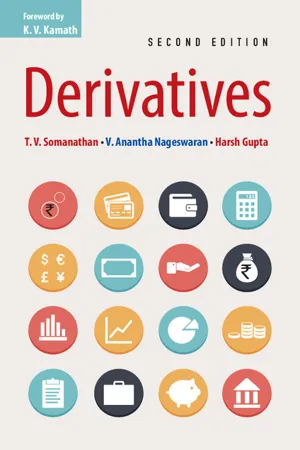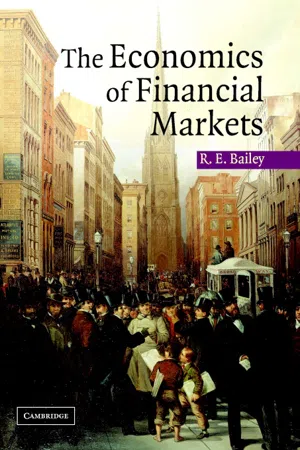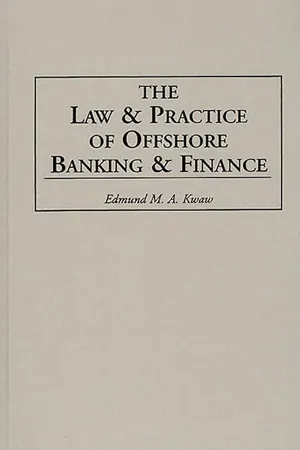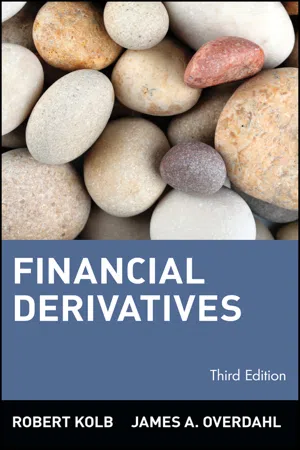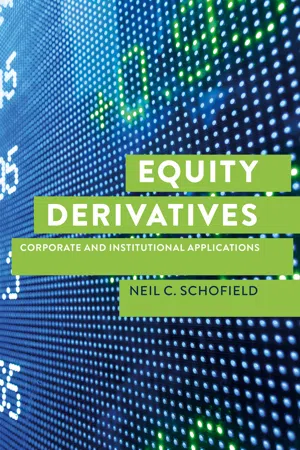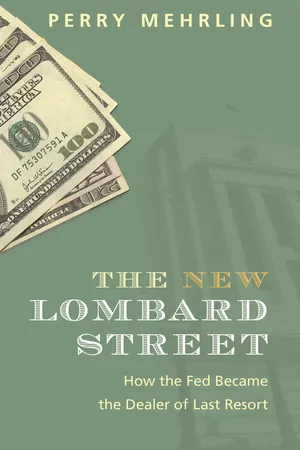Economics
Swaps
Swaps are financial agreements between two parties to exchange cash flows or other financial instruments. They are commonly used to manage risk, hedge against fluctuations in interest rates or currency values, and to customize investment strategies. Swaps can involve various underlying assets, such as interest rates, currencies, commodities, or securities.
Written by Perlego with AI-assistance
Related key terms
1 of 5
10 Key excerpts on "Swaps"
- eBook - PDF
- T. V. Somanathan, V. Anantha Nageswaran, Harsh Gupta(Authors)
- 2017(Publication Date)
- Cambridge University Press(Publisher)
Part – III Swaps 135 8 Swaps – Part I Interest Rate and Currency Swaps Swaps are contracts in which two separate streams of cash flow are exchanged or ‘swapped’. The streams could be two different kinds of interest amounts, two currencies or indeed any two differing streams of cash. This chapter introduces the conceptual basis of swap contracts and then explains interest rate Swaps and currency Swaps. The next chapter deals with other types of Swaps and some general issues relating to the Swaps market. Definition A swap transaction is a contract by which two or more parties exchange (swap) one set of pre-determined payments for another. Some important types of swap are the following: An interest rate swap is an agreement between two parties to exchange interest obligations or receipts in the same currency on an agreed amount of notional principal for an agreed period. A currency swap is an agreement between two parties to exchange payments or receipts in one currency for payments or receipts in another. An equity swap is an agreement between two parties to exchange dividends and/or capital returns on an underlying share with another equity flow or interest flow, in the same or different currencies. Currency Swaps slightly predated interest rate Swaps, but the latter now predominate in volume. Equity Swaps are more recent but growing fast. Swaps can also combine some of the features of interest rate and, say, currency Swaps. Thus, a fixed rate payment in dollars might be swapped for a floating rate payment in yen. Such transactions are more complex. A key feature of Swaps is that they deal with a set of cash flows involving multiple periods, not a one-time cash flow. This is an important distinction between Swaps and futures or options, both of which deal with a single expected cash flow at one specified time in the future. In a swap, invariably there are DERIVATIVES 136 multiple dates involved where one or more income streams would need to exchange hands. - eBook - ePub
Elementary Financial Derivatives
A Guide to Trading and Valuation with Applications
- Jana Sacks(Author)
- 2015(Publication Date)
- Wiley(Publisher)
3 Swaps3.1 Swaps Fundamentals
Swaps were first introduced to the public in 1981 when IBM and the World Bank entered into a swap. Today, Swaps are the most heavily traded financial contracts in the world. The swap markets are enormous in size on the world scale. According to the Bank for International Settlements (BIS), the total amount of interest rates and currency Swaps outstanding was around $348 trillion in 2010. The whole derivatives market was over $600 trillion in 2013.In that it may be surprising that Swaps as of now are still nonstandardized contracts and therefore are traded over the counter (OTC). Given the high frequency of contract structuring, in order to facilitate trading, market participants have developed the ISDA Master Agreement, which covers the legal terms of a swap contract, such as representations and warranties, and events of termination and default. Swaps are subject to credit risk. Other than that counterparties in a swap only need to negotiate the notional principal, interest rate or price, expiration, and collateral, if necessary. Interestingly, swap transactions are usually not disclosed on corporate balance sheets. Most recently proposed legislation changes may alter that.Swaps are contract agreements in which one party agrees to make a series of regularly scheduled payments to another party and receive payments from the other party. In a swap, parties exchange assets, liabilities, currencies, securities, and commodities. There is a spectrum of complexity that swap structures may exhibit. An example of a rather simple one is a floating-for-fixed-rate swap. The most complex ones include multiple currencies, interest rates, commodities, and options. As is the case with OTC derivatives, Swaps are flexible in terms of specifications such as timing or contractual horizons, settlement procedures, and so on.Generally, Swaps are used for risk management by relatively large institutions such as banks, brokers, dealers, and corporations. Individuals are not excluded but have to be qualified in order to be permitted to participate in swap transactions. At the outset of a swap, the swap has value of zero. No cash changes hands between counterparties. The reason for the zero value is that the future anticipated flows of each of the two counterparties' cash flows exactly equal one another in their present value. Swap payments are settled on regularly scheduled settlement dates. Exchanging the difference between swap payments only is called netting the payment. The final payment coincides with the termination date of the swap contract (Fig. 3.1 - eBook - PDF
- Roy E. Bailey(Author)
- 2005(Publication Date)
- Cambridge University Press(Publisher)
17 Swap contracts and swap markets Overview Financial Swaps , like ice cream, come in a variety of flavours and packaging. An early flavour, popular since the 1970s, is the foreign exchange swap, an arrangement in which one currency is exchanged for another at regular intervals over an agreed time period. These foreign exchange (currency) Swaps, together with several other sorts of swap, are described in section 17.1, where their affinity with forward contracts is explained. Also described here are ‘swap futures’, a sort of futures contract involving not the delivery of swap contracts themselves but, rather, cash settlements based on interest rate movements, which are relevant in many swap agreements. Section 17.2 applies an elementary comparative advantage argument that provides a rationale – not the only one – for the existence of Swaps. Although Swaps are acknowledged to be low-risk financial instruments, they are not risk-free; the attendant risks are outlined in section 17.3. During the life of a swap, the parties to it may need to determine the swap’s market value – i.e. what a third party would be prepared to pay for it. This is the subject of section 17.4. Finally, section 17.5 reviews the case of Metallgesellschaft, a large German conglomerate that incurred damaging losses from trading in derivatives, of which swap contracts were a significant component. 17.1 Swap agreements: the fundamentals Swap contracts often include complicated provisions that tend to obscure their fundamental principles – principles that turn out to be simpler than they appear at first glance. Hence, it is instructive to begin with an example that, although unrealistic, focuses attention on the crucial aspects of Swaps. 417 418 The economics of financial markets Suppose that two investors, A and B (they might be companies, financial insti-tutions or private individuals), agree that, six months from the present, A will pay £1m (m ≡ million) in return for $1.44m. - eBook - PDF
- Alan C. Shapiro, Peter Moles(Authors)
- 2014(Publication Date)
- Wiley(Publisher)
3 Swaps also allow firms that are parties to the contracts to lower their cost of foreign exchange risk management by arbitraging their relative access to different currency markets. A borrower whose securities are much in demand in one currency can obtain a cost saving in another currency sector by raising money in the former and swapping the funds into the latter currency. A company in the Eurozone, for example, may want to secure fixed-rate funds in Australian dollars in order to reduce its Australian dollar exposure, but it may be hampered in doing so because it is a relatively unknown credit in the Australian financial market. In contrast, an Australian company that is well established in its own country may desire floating-rate euros financing but is relatively unknown in the European financial market. In such a case, a bank intermediary familiar with the funding needs and “comparative advan- tages” in borrowing of both parties may arrange a currency swap. The Eurozone company borrows floating-rate euros, and the Australian company borrows fixed-rate Australian dollars. The two com- panies then swap both principal and interest payments. When the term of the swap matures, say, in five years, the principal amounts revert to the original holder. Both parties receive a cost savings because they initially borrow in the market in which they have a comparative advantage and then swap for their preferred liability. In general, currency Swaps allow the parties to the contract to arbi- trage their relative access to different currency markets. A borrower whose securities are much in demand in one currency can obtain a cost saving in another currency sector by raising money in the former and swapping the funds into the latter currency. Currency Swaps are, therefore, often used to provide long-term financing in foreign currencies. - Edmund Kwaw(Author)
- 1996(Publication Date)
- Praeger(Publisher)
These and other problems led to the demise Swap-Driven Financing in the Eurocurrency Market 177 of the parallel and back-to-back loan forms of financing, and the emergence of the swap. There are two kinds of swap-driven financing, namely the interest rate swap-driven financing and the currency swap-driven financing. Currency swap-driven financing and interest rate swap-driven financing are, generally, the synthetic operations that are achieved when an underlying financing transaction, for example, a loan facility or bond issue is combined with a currency swap or an interest rate swap. It is important to stress that, because of the growth of the swap market, there has been a significant increase in the use of variations of swap products to meet the needs of customers. 2 8.00[2] The Swap and Swap-Driven Financing The swap can be defined in economic as well as legal terms. Some of the literature on Swaps adopt an economic approach to defining Swaps. 3 In eco- nomic terms the swap could be defined as the exchange of positions or financial cash flows. 4 This economic definition, however, is inappropriate for the pur- poses of this work because it impedes an appreciation of the legal basis of swap financing. Furthermore, such an economic definition distinguishes between the different kinds of Swaps, a distinction which may not be completely justified in legal terms. 5 In general legal terms, the swap 6 is a contract between two parties, the counterparties, who agree to exchange or swap amounts comprising their respective obligations, either on debt instruments or on asset instruments, 7 and to make periodic payments comprising the floating or fixed interest payments on their respective obligations to each other. 8 The underlying contract sets out the obligations of the counterparties with respect to the schedule of payments, payments of gross amounts and net margins, and other provisions, such as those providing for termination and default.- eBook - PDF
Foreign Exchange in Practice
The New Environment
- S. Anthony(Author)
- 2002(Publication Date)
- Palgrave Macmillan(Publisher)
CHAPTER 8 Swaps In this chapter, the concepts of currency and interest rate Swaps are intro- duced. Currency Swaps provide a powerful tool for manipulating cross currency cash flows without creating a net exchange position. They can be used to roll foreign exchange positions and to simulate foreign currency loans or investments. They can also be used to exploit arbitrage opportuni- ties and to manage banking system liquidity. Interest rate Swaps provide a means of switching interest rate exposures between fixed and floating. Cross currency Swaps can be used when floating interest rates are involved. Definition A currency swap is the simultaneous purchase and sale of equivalent amounts of one currency against another currency for different maturi- ties. A currency swap does not create a net exchange position but it does create mismatched cash flows for a period of time. A currency swap is equivalent to two money market transactions. To illustrate this point, consider the cash flows involved when someone buys Australian dollars spot against US dollars and sells Australian dollars three months forward against US dollars (Exhibit 8.1). EXHIBIT 8.1 Cash flow representation of a currency swap 130 A$ Spot US$ + – A$ 3 months US$ – + The cash flows are the same as when borrowing Australian dollars for three months and lending US dollars for three months. The pricing of the swap must therefore reflect the interest rates applicable to these money market transactions. The direction of the cash flows in the second leg of the swap is the oppo- site of those in the first leg of the swap. Consequently, as with money market transactions, currency Swaps create only a temporary mismatch in cash flows. They do not create a net exchange position. TYPES OF CURRENCY SWAP 1. A pure swap is a swap in which both the spot and forward transactions are done simultaneously with the same counterparty. - eBook - ePub
- (Author)
- 2023(Publication Date)
- Wiley(Publisher)
1. IntroductionSwap contracts were introduced earlier as a firm commitment to exchange a series of cash flows in the future, with interest rate Swaps where fixed cash flows are exchanged for floating payments being the most common type. Subsequent lessons addressed the pricing and valuation of forward and futures contracts across the term structure, which form the building blocks for swap contracts.In this lesson, we will explore how swap contracts are related to these other forward commitment types. While financial intermediaries often use forward rate agreements or short-term interest rate futures contracts to manage interest rate exposure, issuers and investors usually prefer swap contracts, since they better match rate-sensitive assets and liabilities with periodic cash flows, such as fixed-coupon bonds, variable-rate loans, or known future commitments. It is important for these market participants not only to be able to match expected future cash flows using Swaps but also to ensure that their change in value is consistent with existing or desired underlying exposures. The following lessons compare swap contracts with forward contracts and contrast the value and price of Swaps. - eBook - PDF
- Rob Quail, James A. Overdahl(Authors)
- 2003(Publication Date)
- Wiley(Publisher)
Selectively closing out only those Swaps with positive value is called cherry picking. Possible cherry picking is a scenario that must be accounted for in measuring potential counterparty credit exposure. The same legal rules will not apply to all Swaps between dealers and end users. Some Swaps may be covered by a legally binding netting agree- ment and others may not. The simulation method must apply the appropri- ate legal rules to each contract. SUMMARY This chapter has provided a basic introduction to the Swaps market. From origins in the late 1970s and early 1980s, the Swaps market has grown to enormous proportions, with notional principal surpassing $100 trillion by some estimates. Most of the market is concentrated in interest rate Swaps, but billions of dollars of foreign currency Swaps are outstanding as well. Of all Swaps worldwide, over one-third involve the U.S. dollar. In contrast with futures and exchange-traded options, swap agreements are extremely flexible in amount, maturity, and other contract terms. As further points of differentiation between futures and exchange-traded op- tions versus Swaps, the Swaps market does not use an exchange and is virtu- ally free of governmental regulation. In this chapter, we also analyzed plain vanilla interest rate, currency, eq- uity, commodity Swaps, and credit Swaps. An interest rate swap essentially involves a commitment by two parties to exchange cash flows tied to some amount of notional principal. One party pays a fixed rate, while the second party pays a floating rate. In equity and commodity Swaps, we saw that, like interest rate Swaps, the essential feature is the transformation of a fixed-rate obligation into a floating-rate obligation for one party, and a complemen- tary transformation of a floating-rate obligation to a fixed-rate obligation for the other party. In a foreign currency swap, both parties acquire funds in different currencies and exchange those principal amounts. Each party pays - eBook - PDF
Equity Derivatives
Corporate and Institutional Applications
- Neil C Schofield(Author)
- 2017(Publication Date)
- Palgrave Macmillan(Publisher)
287 © The Author(s) 2017 N. Schofield, Equity Derivatives, DOI 10.1057/978-0-230-39107-9_10 10 Equity Swaps 10.1 Introduction The fundamental principles of equity Swaps were introduced in Chap. 1; Sect. 1.3.2 outlined some of the basic features of the instrument while Fig. 1.3 illustrated the principles with a simple cash flow diagram. The valuation of equity Swaps was considered in Sect. 4.4. The main objectives of this chapter are as follows: • Review the fundamental concepts of equity Swaps • Outline the different equity swap variations • Describe the different motivations for executing an equity swap • Outline the main product applications • Describe the main features of contracts for difference 10.2 Fundamentals of Equity Swaps An equity swap is a derivative instrument that allows an investor to take a long or short exposure to an underlying equity, index or basket of shares. It is an exchange of cash flows where one party will pay an equity-linked return in exchange for LIBOR +/− a spread. The entity paying the LIBOR leg will also be obliged to pay any decrease in the price of the underlying. Equity Swaps can be structured to reference only the change in the price of the underlying (‘price return swap’) or can reference both the change in the price and any dividends paid (‘total return swap’—TRS). Note that it is possible that the underlying could experience a fall in price but still pay a dividend. This would mean that an investor who has opted to pay the LIBOR leg would also pay this decrease in the price but would receive a cash flow determined by the dividend payment. This is not unreasonable as the swap aims to replicate an actual holding in the underlying without the need to buy the asset itself. The main features of an equity swap are as follows: • The underlying—this could be an index, a single stock, a basket of shares, a basket of indices or perhaps a specific investment fund. - eBook - ePub
The New Lombard Street
How the Fed Became the Dealer of Last Resort
- Perry Mehrling(Author)
- 2010(Publication Date)
- Princeton University Press(Publisher)
From the start, the Bretton Woods system was built on a contradiction. It established a fixed exchange rate system internationally even as it endorsed uncoordinated macroeconomic management at the level of the individual nation-state. The solution to this contradiction was supposed to be capital controls. Some countries might have loose macroeconomic policy while others might have tight macroeconomic policy. In order that the loose ones not be constrained by loss of international reserves, individual countries were permitted to control international capital flows, in and out.The birth of the swap came as a way for individual firms to get around these national controls. The first such Swaps were arranged as parallel loans, and this parallel loan construction remains the most straightforward way to understand them, even though in later developments the loans became implicit rather than explicit.1 Indeed, the parallel loan interpretation is the most straightforward way to understand interest rate Swaps and credit default Swaps as well, two later constructions that played a key role in extending the logic of arbitrage throughout the evolving postwar financial system. The swap idea was completely central, and it all started with the currency swap, so it is of some importance to understand how this swap worked.Currency Swaps and the UIP NormThe essence of banking is a swap of IOUs. When a bank makes a loan, it adds to its balance sheet both an asset (the loan) and a liability (a deposit in the name of the borrower). The first currency Swaps were nothing more than a minor variation on this traditional banking idea. Suppose an American company A has dollars but needs pounds in order to finance expansion by its subsidiary in England, and a British company B has pounds but needs dollars in order to finance expansion by its subsidiary in the United States. Suppose further that capital controls prevent them from trading currencies and making the desired investment directly. They can accomplish essentially the same thing by using a parallel loan construction.
Index pages curate the most relevant extracts from our library of academic textbooks. They’ve been created using an in-house natural language model (NLM), each adding context and meaning to key research topics.
